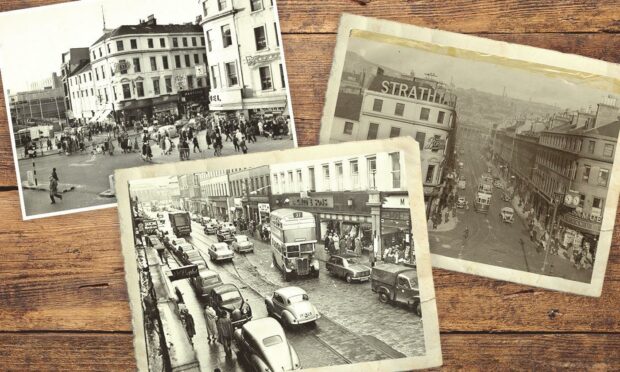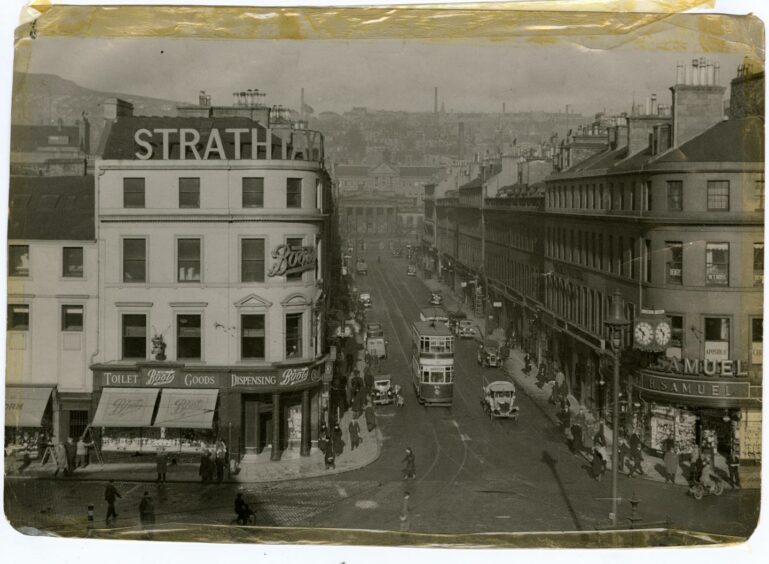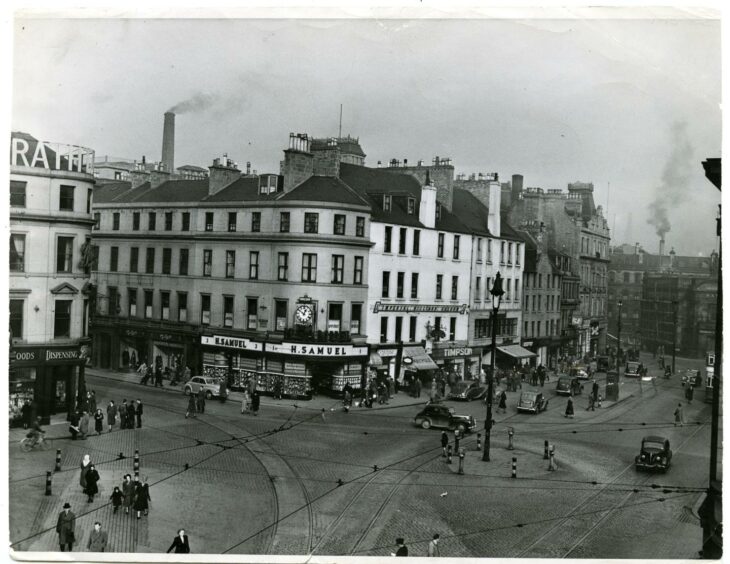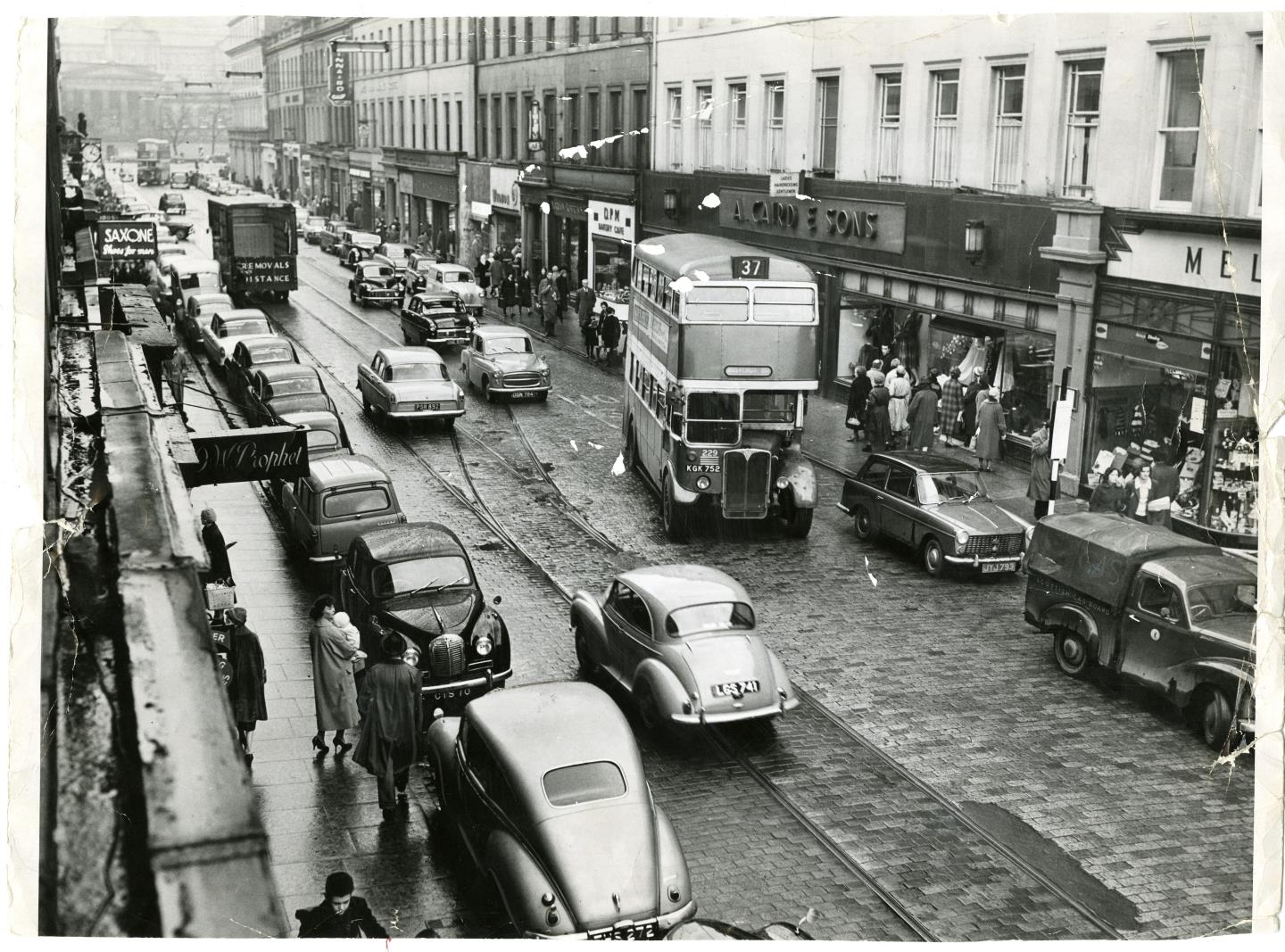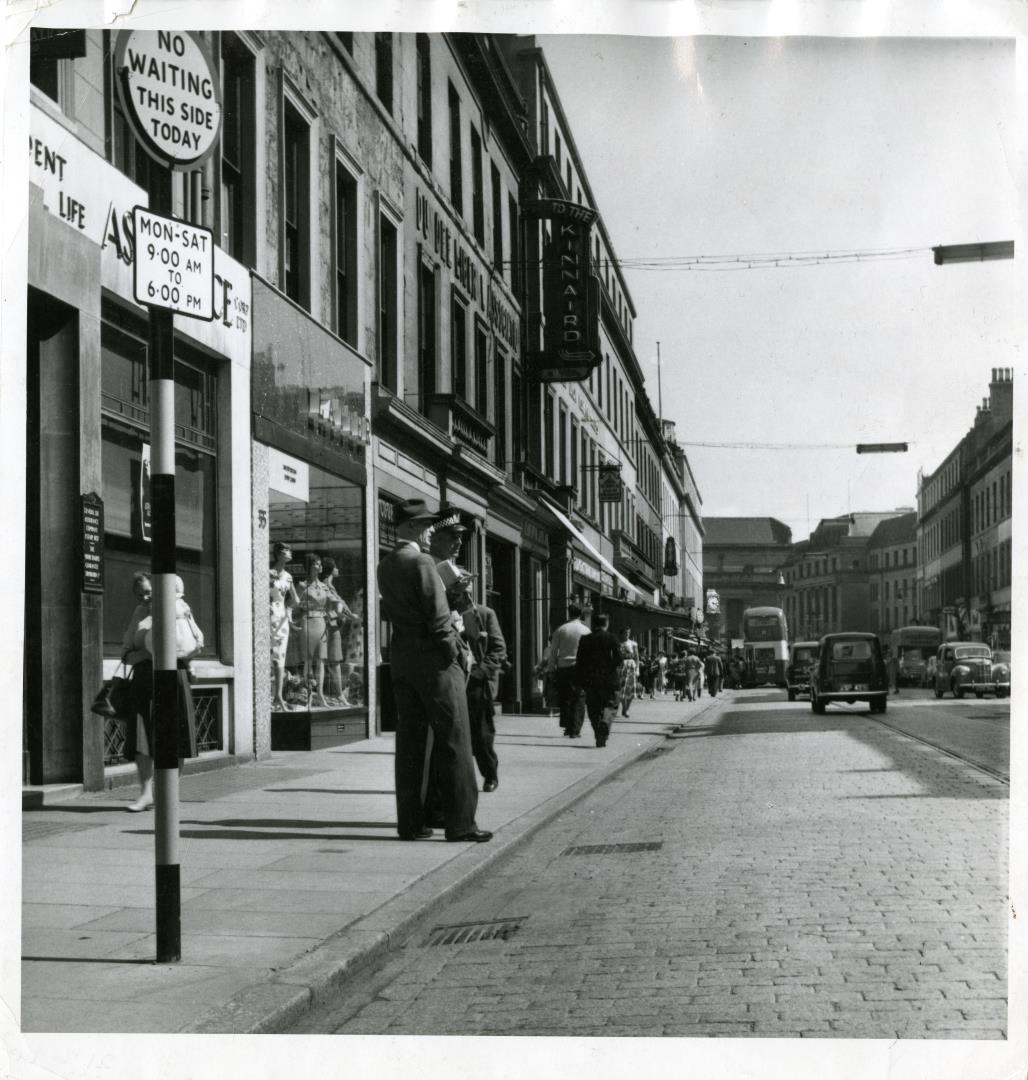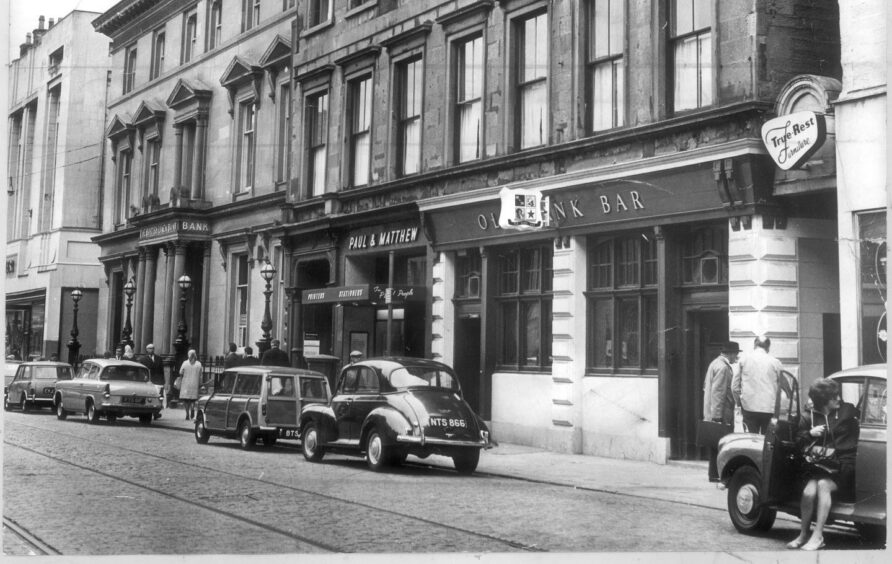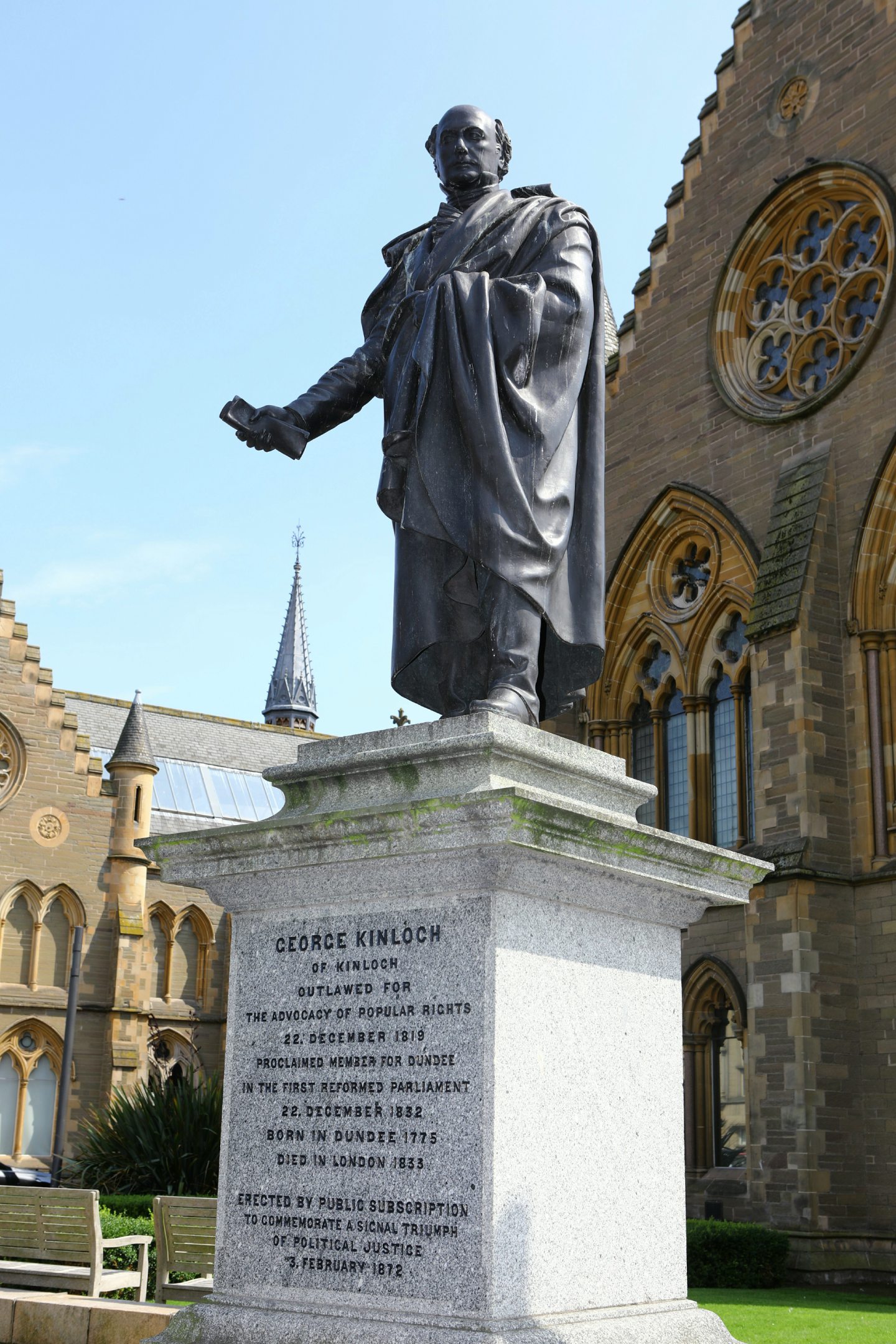We walk along them every day without realising their amazing history.
Many of Dundee’s street names have interesting origins which can provide a fascinating glimpse into the city’s past.
Reform Street is a prime example.
Now home to a few pubs and a range of fast food places, it could rival Savile Row in past times as being a go-to place for gentlemanly style.
It began life as a homage to Dundee’s first MP, George Kinloch, whose statue was unveiled in Albert Square 150 years ago, in 1872.
The radical Kinloch was Dundee’s first MP in 1832.
Reform Street was subsequently named after the 1832 Reform Act, which took Kinloch to Westminster.
An alternative name was put forward by one harassed town councillor.
His idea was to call it Mortgage Street in allusion to the money borrowed for the work!
Who was George Kinloch?
Kinloch was born in Dundee in 1775.
His first involvement with politics was in 1814 when he worked for the campaign for the development of the harbour, which earned him a high public profile.
However, he was soon found to be attending meetings in 1817 and 1819 in favour of Parliamentary reform, which attracted less favourable attention.
After leading a mob of 10,000 on Magdalen Green in a protest against the Peterloo massacre of 1819, Kinloch was charged with sedition.
Kinloch was taken to Dundee Tolbooth to await trial and possible deportation to Botany Bay but escaped to France where he was declared an outlaw.
In 1822 Kinloch’s daughter was presented to George IV in Edinburgh and successfully intervened on his behalf to grant her father a pardon.
The King cancelled the sentence for outlawry and Kinloch returned to Dundee where he at first kept clear of politics, before being convinced to stand for election.
By the Reform Bill of 1832, Dundee obtained the right to send one representative to Parliament and Kinloch was elected MP following a public vote.
Reform Street, positioned between the High Street and Meadowside, was named in his honour, although he was only in the MP post for a short while.
Kinloch died in London just two months after the start of Parliament and his body was brought back to Scotland for burial at the Kinloch Chapel at Meigle.
In his honour, a statue of Kinloch was unveiled in Albert Square in 1872, following several campaigns and just as many setbacks over the decades.
Reform Street origins
Local historian Dr Norman Watson said this stylish street was the first to be laid out as a result of the local 1825 Improvement Act.
He said: “It was planned by the architect of Dundee High School – some said cynically only to provide a handsome avenue to his porticoed school which closed the vista at Reform Street’s north end.
“In fact, and, according to reports of the time, its opening was ‘an epoch-making event’.
“It certainly changed the nature of the town by removing the continuous line of the High Street along to Overgate, which had a gap blasted through it to provide the new route to the marshy area known as The Meadows.
“Among merchants with the courage of their business instincts to move to Reform Street were two shoemakers, one hatter, five clothiers and two silk merchants.
“Thus Reform Street soon became Scotland’s Savile Row, with an abundance of tailors, drapers and hatters.
“By 1864, when the town’s population had reached nearly 100,000, the street hosted a dozen tailors alone.”
One of the best-known was menswear outfitters Cooper & McKenzie, which traded there from 1874 before closing its doors for the last time back in 2019.
The DC Thomson empire started here when William Thomson opened his own draper’s business at 10 Reform Street in the 1850s.
His son, David, later the famous ‘DC’, was born next door in 1861.
Anchored at its south end by Boots and the jeweller’s Samuel’s – retail giants undisturbed for a century on this corner site – Reform Street was finished to the north by the High School and the former Lamb’s Hotel, which was the last building to be built in the street, in 1867.
Today’s Reform Street is pedestrianised to its junction with Bank Street.
Dr Watson said: “If you think your eyes are deceiving you at the sight of a familiar blue, white and red tricolour flying at that point, fear not.
“It signals the office of the French Consulate in the city – coincidentally just a few metres from the Howff burial ground and the grave of a former French Guardsman, a prisoner from the Peninsular Wars who settled in the city in the 1830s and became its first teacher of French.
“The Old Bank Bar on the corner is a popular watering hole and a long-time favourite among music lovers who travelled across the country and beyond to attend the Dundee Blues Bonanza.
“Billed as Europe’s biggest free blues festival, it brought an estimated 12,000 music lovers to the city.
“Evolved into the Almost Blue festival, the three-day 2015 event encompassed 22 venues and over 100 performances.
“The bar was also the ‘spiritual home’ of journalists who occupied the John Leng and DC Thomson newspaper offices around the corner in Bank Street, the city’s one-time ‘Fleet Street’.
“Though long abandoned as a publishing office, the façade still displays titles such as ‘Evening Telegraph’ and ‘People’s Journal.’ Opposite is the last remnant of the former Kinnaird Hall, the town’s largest Victorian venue, where a militant suffragette sensationally tried to lower herself from a trapdoor in the ceiling during a Cabinet minister’s meeting!”
The south side of Bank Street, where once The Courier and Evening Telegraph were printed, is now mostly taken up by the Overgate multi-storey car park, with 700 spaces.
Reform Street’s prime location ensures it remains at the heart of the city and its name ensures the legacy of George Kinloch lives on.
More like this:
Did you visit Wimpy in Dundee? Memories of iconic burger chain
From slums to shops: The original, the old and the new Overgate Centre
